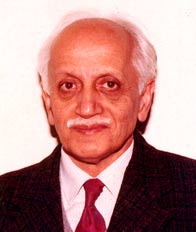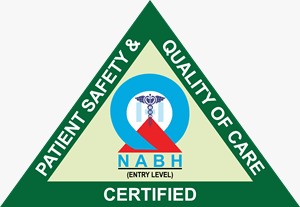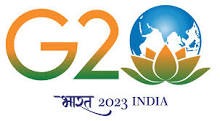
Prof. Autar Singh Paintal was born in Burma on Sept. 24, 1925. After receiving the M.B.B.S. Degree from Lucknow Medical College, he proceeded to the University of Edinburgh as a Rockfeller Fellow and obtained Ph.D. degree in 1953. He worked at the VPCI as Assistant Director from 1954 to 1956. He was a Visiting Professor at Albert Einstein College of Medicine, New York, Universities of Utah, USA and Gottingen Germany (1956-58). After serving as Professor of Physiology at the All India Institute of Medical Sciences new Delhi for six years, he joined as Director of the V.P Chest Institute in 1964.
Dr. Paintal began his research career by introducing a new index for evaluation of galvanic skin responses in man (1951), new techniques for recording impulses from single active fibres nerves and their conduction velocities (1953) and a method for locating visceral receptors (1954). He discovered the following sensory mechanisms:
1. Type B atrial receptors (1953),
2. Gastric stretch receptors responsible for the immediate satiation of hunger(1954),
3. Juxtapulmonary capillary (J) receptors (1955),
4. Ventricular pressure receptors (1955),
5. Mucosal mechanoreceptors of the intestines (1957) and
6. Pressure-pain receptors of muscles (1960).
He was best known for his discovery in 1955 of type J receptors which cause tachypnoea and breathlessness. These receptors are interstitial volume receptors and they produce inhibition of somatic muscles, i.e. the J reflex that terminates exercise (1969, 1970). Finally, he showed that they produce sensations in throat and chest (dyspnea), dry cough (1986).
With R. L. Riley he showed that there were no chemoreceptors in the pulmonary circulation and that aortic chemoreceptors were neither stimulated by CO2 nor by metabolites but were stimulated by reducing oxygen availability (1976). His observation that non-modulated fibers are blocked at a lower temperature than medullae fibers (1967) is routinely used in studies on respiratory and cardiovascular reflexes.
He discovered the principle relating to the relative dilution of multiple solutes in flowing fluids (1991). Using this principle, he, along with A. Anand, introduced a new method for measuring in vivo the blood concentration of J receptor excitants and showed that they move out of the capillaries through forces of diffusion and not of filtration (1992). Along with A. Anand and D Whitteridge, he showed that stimulation of the receptors is enhanced by increased permeability of the pulmonary capillaries (1993), thereby supporting the earlier suggestion made by him (1989) that permeability of the capillarican be measured using J receptor excitants.
Impact' of Paintal's work
Paintal's discoveries have had a great impact on our understanding of the behaviour of several visceral receptors in health and disease. For example, our knowledge of the J. receptors and their various central and reflex effects discovered by him is now routinely used by clinicians in the assessment of their patients suffering from a variety of heart and lung diseases. In addition, the following new techniques introduced by him are being routinely used in numerous laboratories around the world:
1. Technique for dissecting and recording impulses from mammalian nerve fibres dissected from nerves under liquid paraffin (1953)
2. Technique for providing the conduction velocities of individual active fibers in a mixture of other nerve fibers (1953)
3.Technique for locating visceral sensory receptors with drugs (1954).
Prof. Paintal had been in research on exertional breathlessness till his sudden demise on December 21, 2004.
In recognition of his outstanding work, he was elected to the Fellowship of the Royal Society of Edinburgh (1996) and Royal Society of London (1981). He had received numerous honours and awards, including the B.C. Roy Oratorship (1974) and the Silver Jubilee Award of the Medical Council of India (1978), the Barclay Medal of the Asiatic Society (1982), the Rameshwardas Birla National Award (1983), the Jawaharlal Nehru Science Award of the Government of Madhya Pradesh (1983) and Padma Vibhushan (1986). He served as President of the Indian National Science Academy and President of the Indian College of Allergy and Applied Immunology (1980). He was elected General President of the Indian Science Congress Association 1984-85, and honorary member of the Physiological Society, U.K., and of the American Physiological Society (1990).
For detailed information, please see ‘Adventures in Physiology: The times and life of Autar S Paintal’ J. Biosci. 31(5), December 2006, 513–524, available at the link http://www.ias.ac.in/jbiosci/dec2006/513.pdf












.png)
.png)



